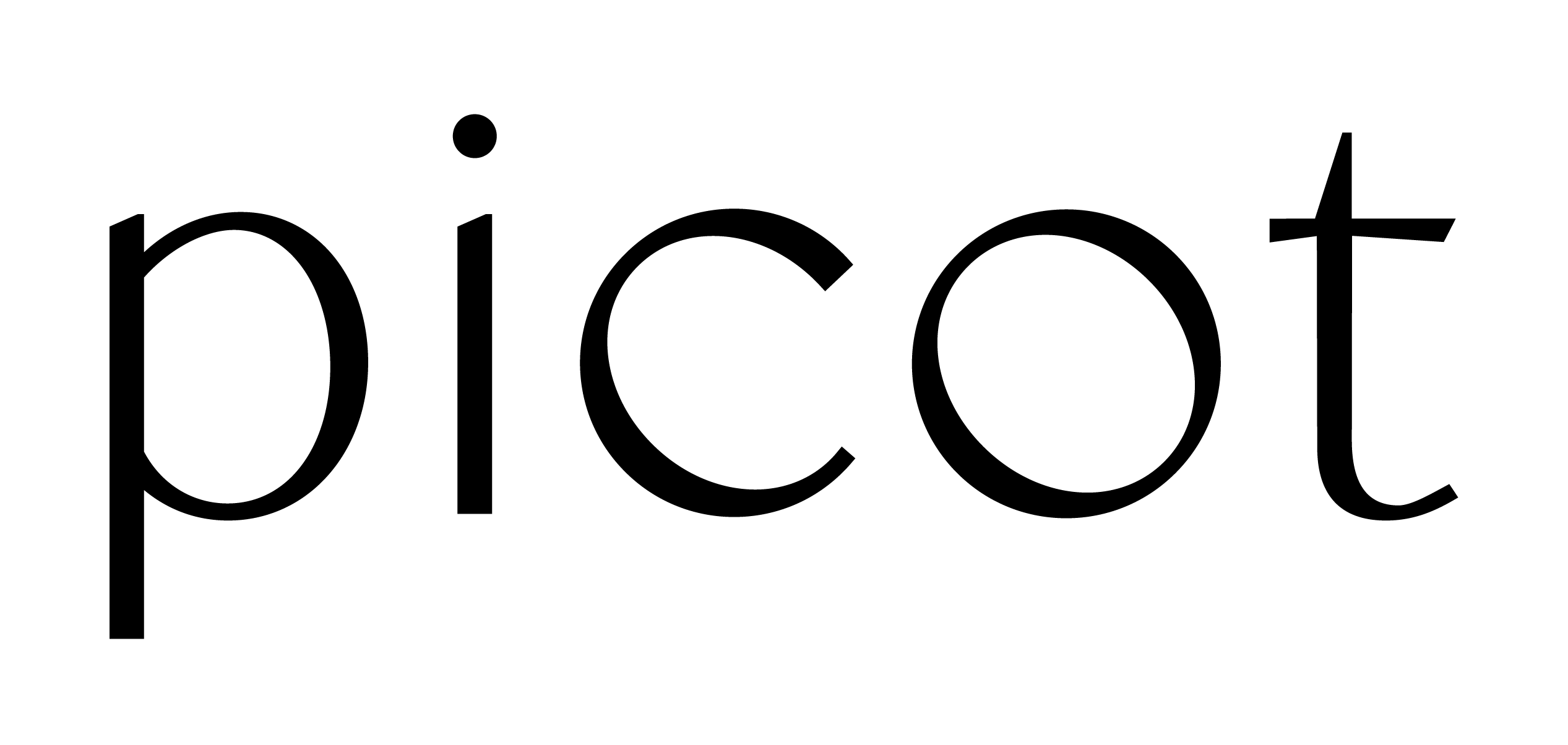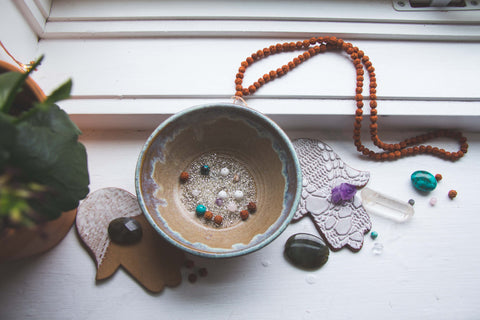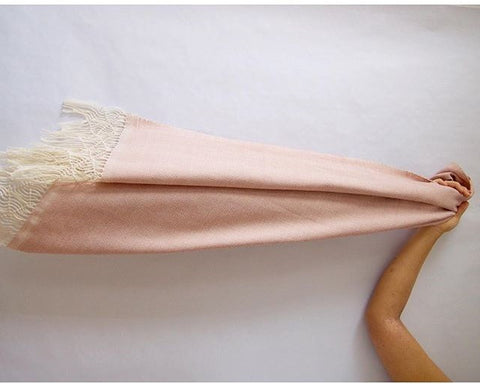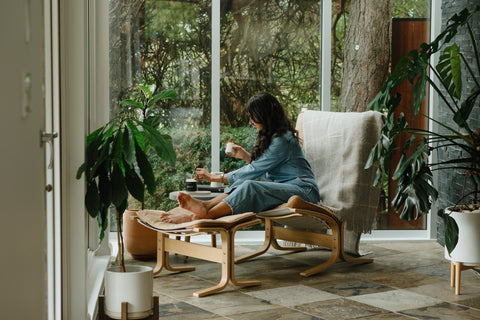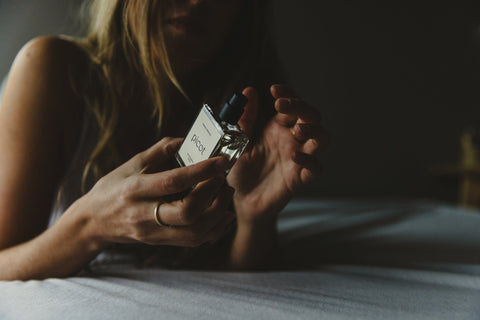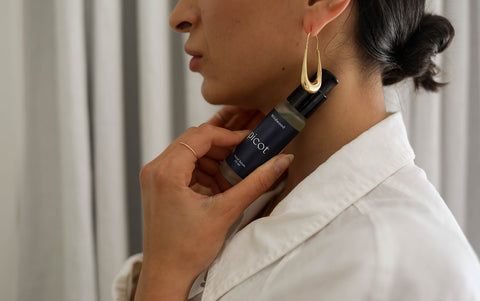When I first started working at Picot this Spring, having no previous knowledge or appreciation for pottery, Ghost Mountain's botanical mugs were the first pieces I fell head over heels for. I loved the whimsical vibe of her scattered designs. The etchings of flora, mushrooms, and botanicals, occult symbols, and constellations filling every little space are mesmerizing. They sometimes come with a bit of mystery and are always beautiful and unique. Her dark navy blue on white clay is another signature of Ghost Mountain ceramics, easily standing out on a shelf, begging to be examined.
We had Simone answer some questions for us about the progression of her art and business, and where she gathers the inspiration for her fantastic ideas.

Picot: Tell us a little about yourself / your business
Simone: I’m Simone, and I was born and raised on the West Coast. I like hiking, researching, and slow processes. My favourite animal is a rabbit.
Landscape, myth, heritage, language--they shape everything I do. I wanted Ghost Mountain Co. to be the culmination of all those things into something both beautiful and useful, so I make functional ceramics.
Picot: What challenges have you overcome that lead you to a deeper understanding or a shift in perspective for you?
Simone: Pricing my work is always tricky! Accessibility in art is something that is very important to me, but there’s also the need to make a living. As I’ve grown in this business I’ve really learned to value my time and work far more.
Picot: What makes you most excited about the evolution of your business?
Simone: I never really expected Ghost Mountain Co. to become something that could feasibly support me, so that fact is pretty thrilling in itself. Other than that I'd say getting cool custom projects gets me most excited for the future. I recently did a series of sake cups for a new restaurant downtown and I felt so proud knowing the client was happy with my work and that it was getting so much use.

Picot: Do you have a mentor?
Simone: In ceramics specifically, there have been a few. First off, my mother has always been incredibly supportive. She’d drive me across town to art classes as a child and always made sure I was encouraged in pursuing creative outlets. She’s a creative, fun, get-it-done kind of woman. I admire the hell out of her.
Second is Ronna Ander, the tech at my old studio in Vancouver, who has helped me tremendously by sharing her vast technical knowledge with me in the form of recipes, throwing techniques and tips for running a tight studio. Most if not all of my good habits are courtesy of her.
Finally, Doña Grimanesa is a Ticuna elder I studied under in the Amazon, one of the last to practice ceramics in her village. She’s amazing; she’s got to be around seventy and she still hauls clay from the river on her own. She did me the great honour of sharing not only her ceramic tradition but many of the Ticuna origin stories.
Picot: How did you come up with the name Ghost Mountain? Is there a special significance behind it?
Simone: I was trying to come up with something that really encompassed the aesthetic of my work and the things I love; something evocative of both folklore and witchcraft as well as the inherent magic of the natural world. I love hiking in the fall and winter for the sole reason that the mountains take on this beautiful melancholy.
After writing many lists of names, Ghost Mountain came to me and it just sounded like a place that I’d like to visit—some kind of craggy mountain swathed in mist and dark forests where spirits make their homes. It’s also a bit of a pun on the Coast Mountains near where I grew up.
Picot: Can you tell us about a specific time in your life when your path had a trajectory, or had a catalyst moment that lead you to where you are now?
Simone: Starting Ghost Mountain Co. has been very much a circular path for me, a return of sorts.
Since a very young age I have felt most at home when creating. After high school I actually was accepted into art school, but I had just as much passion for writing and decided that would be a more practical path to take. I worked towards becoming a writing professor, making art for myself all the while, never taking it seriously because I never thought I could make a living at it.
I had taken several pottery classes over the course of my childhood and teen years, but never stuck with it until I came back from traveling and was unemployed for a number of months. I was very down at this time, but found going to the local studio almost every day really helped. Even after I found work, I continued with pottery and Ghost Mountain Co. was born. Looking back, it all makes a lot of sense.
Picot: Has there been a time where you were unsure about your business, or afraid to move forward?
Simone: I’m actually still struggling with the transition to full-time artist--I’m still working in marketing part-time. It’s always a scary leap to leave behind the stability of something like that. It’s a big unknown for me and it can be hard to shake off those voices saying you can’t live off your art. But I also know that to really move forward with this business, I need to devote more time to it. The unknown component makes it kind of exciting, anyway.
Picot: What is a key defining characteristic or choice you have made in developing your business, and why?
Simone: Staying true to my aesthetic, and not wasting my time chasing trends. For example minimalism is very popular right now and I like it as well, so I tried that for a bit. However being a fairly cluttered kind of person myself, I found I derived a lot more enjoyment out of the making process when doing ‘busy’ detail work. Now I just try to flow with how I am feeling and make what I like.

Picot: What would your advice be to budding creative entrepreneurs?
Simone: If you can’t see yourself doing it a lot--and I mean a lot, like working until 2 am some nights with no overtime pay--and still enjoying it, don’t do it. Know your demographic and stick to it. Instagram like a maniac.
Picot: Three books that have become gospel?
Simone: I’m not sure I could call these gospel, as only one of them is about philosophy, but here are three that have certainly shaped the way I look at the world: Wabi Sabi for Artists, Designers, Poets & Philosophers by Leonard Koren; Witness: Selected Poems by Patrick Lane; and Don’t Let’s Go to the Dogs Tonight by Alexandra Fuller.
Picot: You’ve said that you’re inspired the the occult and folklore, and it’s reflected in so much of your work! What draws you to these more mystical genres?
Simone: I was a bit of a spooky child, very into mythology and folklore--one of those children who would build shrines all over the house, or make ‘potions’ from the kitchen spices. I’d spend hours in the library copying sigils from alchemy books, which is where I picked up most of the symbols that appear on my work. I loved the intricacy and mystery of it all.
There’s something really beautiful about ritual and traditions of magic. No matter what tradition you look at, all are inextricably linked with the world around us and more importantly what is beyond what we see. For me personally, it resonates with my passion for biology and nature.
Picot: What are you most proud of?
Simone: Actually kind of pulling this pottery thing off.
Picot: Tell us 8 things people generally don’t know about you
Simone:
-
One of my dreams is to own a piece of property where people can come to take workshops and learn about art and nature.
-
I leave all the kitchen cupboards open after I use them and it drives everyone crazy.
-
All my tattoos are a form of symbolic armour.
-
My summer job in university was working as an educational falconer, caring for and teaching people about birds of prey.
-
I like to sit in the bath in the dark.
-
My guilty pleasure music is reggaeton. I listen to it while I’m painting. Daddy Yankee is my favourite.
-
When I see mass produced clothing that I find to be overpriced I will vindictively copy it.
-
I never played sports in school, but I did Highland dance competitively.
Picot: What would you tell your younger self?
Simone: To worry less (and assume less!) about what people’s expectations of you are. I was so terrified of disappointing people that it would consume my happiness--it took me far too long to realize that the only person you need to worry about disappointing is yourself.
Picot: Besides time and money, what would you like more of?
Simone: Space is a big one. My roommate and I are both artists and it’s hard to make a mess the way you want to in a carpeted apartment!
Picot: Where do you find yourself most at peace?
Simone: It’s oddly specific, but my favourite places to go and explore or decompress are forests along bodies of water. There’s something about coming out of the thick quiet of the forest and seeing an expanse of sea or river that always gives me pause. There’s something powerfully liminal about those places. I think that’s why I love living on Vancouver Island so much, and why I keep returning to the Amazon.
Picot: You are also a published writer and poet, do you find one craft influences the other?
Simone: Absolutely, I think it’s impossible for me to fully separate my passions so pottery, poetry and biology all tend to run into one another. I’ve written a poem or two about the ceramic process recently--I think the alchemy of it lends itself well to being written about.
Picot: If you were to work in a medium besides clay what would you choose?
Simone: I really love fibre and textile art. I made a lot of my own clothes in high school, and as an adult got really interested in the the start-to-finish process of making a garment, especially the weaving and dyeing component. Maybe it’s because I love doing things the hard way! It’s tricky to find the time to explore other mediums with pottery taking up so much of it but I still like to weave and knit to keep busy while watching movies.
Simone's work can be found on her website, here in Victoria at Picot Collective and Little Gold, or in Vancouver at the Good Spirit.
